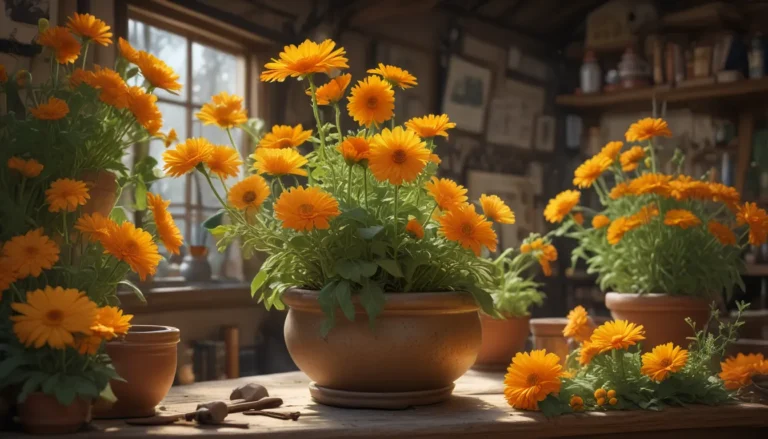Essential Guide to Growing and Caring for Canna Lilies

Discover the World of Canna Lilies
Canna lilies, despite their name, are not true lilies, but they are anything but mundane. These tropical beauties are in the family Cannaceae, with one genus – Canna, consisting of 10 species of flowering perennials. These plants are closely related to tropicals like ginger, bananas, and birds of paradise.
Anatomy
Canna lilies are characterized by their rhizomatous roots, large leaves, and unique blooms. The blooms are actually clustered staminodes that appear to be three large petals. The true petals are small and hidden within the staminodes. The foliage is equally spectacular, with colorful patterns and bright tones like purple, yellow, and red.
Some standout varieties include C. indica ‘Phasion’ with vibrant purple stems and variegated leaves, and C. indica ‘Pretoria’ with striking variegated foliage. The plants can grow up to seven feet tall for the compact dwarf cultivars, while the wild specimens can reach up to 10 feet.
Cultivation and History
Indigenous to southern North America, Central America, and northern South America, Canna lilies have a long history. The tuberous corms of C. indica were originally used as a food source by indigenous people before being discovered by European explorers in the 16th century.
Cannas became popular garden plants in the 1800s with continuous hybridization and crossbreeding to create various cultivars. The plants are also used in agriculture as a source of edible starch and livestock feed. Wild cannas grow in semi-wetland areas where they help purify the substrate.
Propagation
Propagation of Canna lilies is best done through rhizome division rather than seeds due to the unreliable results from seed offspring. Rhizomes spread by producing offshoots that can easily be separated into individual plantings.
From seeds, one must collect ripe seeds from mature pods, nick the thick seed coat, and sow them in a mix of coconut coir and sand. Rhizome divisions, on the other hand, should be carried out every three to four years for plant health and reproduction.
Transplanting
Whether starting from seeds or rhizome divisions, Canna lilies should be transplanted outdoors in their growing sites. For in-ground locations, dig a hole and plant the rhizome at the right depth. Container growing is also an excellent option, provided the pot is large enough to accommodate the plant’s growth.
How to Grow
Canna lilies thrive in regions with temperatures consistently above 40°F and at least six hours of sunlight daily. They prefer heat and humidity but can tolerate a wide range of soil conditions. Regular watering and fertilizing during active growth periods ensure healthy plants.
Growing Tips
- Plant canna lilies in partially shaded areas in warmer climates, whereas cooler climates require full sun.
- Ensure consistent moisture with 1-2 inches of water per week if there is no rainfall.
- Container growing helps control rhizome spreading.
Pruning and Maintenance
Regular pruning is essential to improve blooming and keep plants healthy. Deadheading spent inflorescences and trimming back foliage promotes new growth and discourages pests and diseases. Rhizomes should be divided every three to four years to prevent overcrowding.
Cultivars to Select
Canna lilies come in various cultivars with unique colors and textures. Some popular options include ‘Black Knight’, ‘City of Portland’, ‘Lucifer’, ‘Picasso’, ‘Pretoria’, and ‘Wyoming’. These cultivars are suitable for different zones and can add a tropical touch to any garden or landscape.
Managing Pests and Disease
Canna lilies are relatively pest and disease-free but can be affected by mealybugs, leafrollers, rust, and viruses. Control methods include removing infected plant parts, using barrier methods, and applying organic pesticides like Bt for pest management.
Best Uses
Canna lilies are versatile plants that can be used as focal points, mass plantings, or in water features and wetlands. They pair well with other tropical plants like elephant ears, viburnum, and calla lilies, creating a lush and colorful garden landscape.
From their rich history to their vibrant blooms, Canna lilies are a captivating addition to any garden. With proper care and maintenance, these tropical beauties will thrive and enhance the beauty of your outdoor space. So grab your gardening gloves, get your hands dirty, and let the beauty of Canna lilies brighten up your garden!





